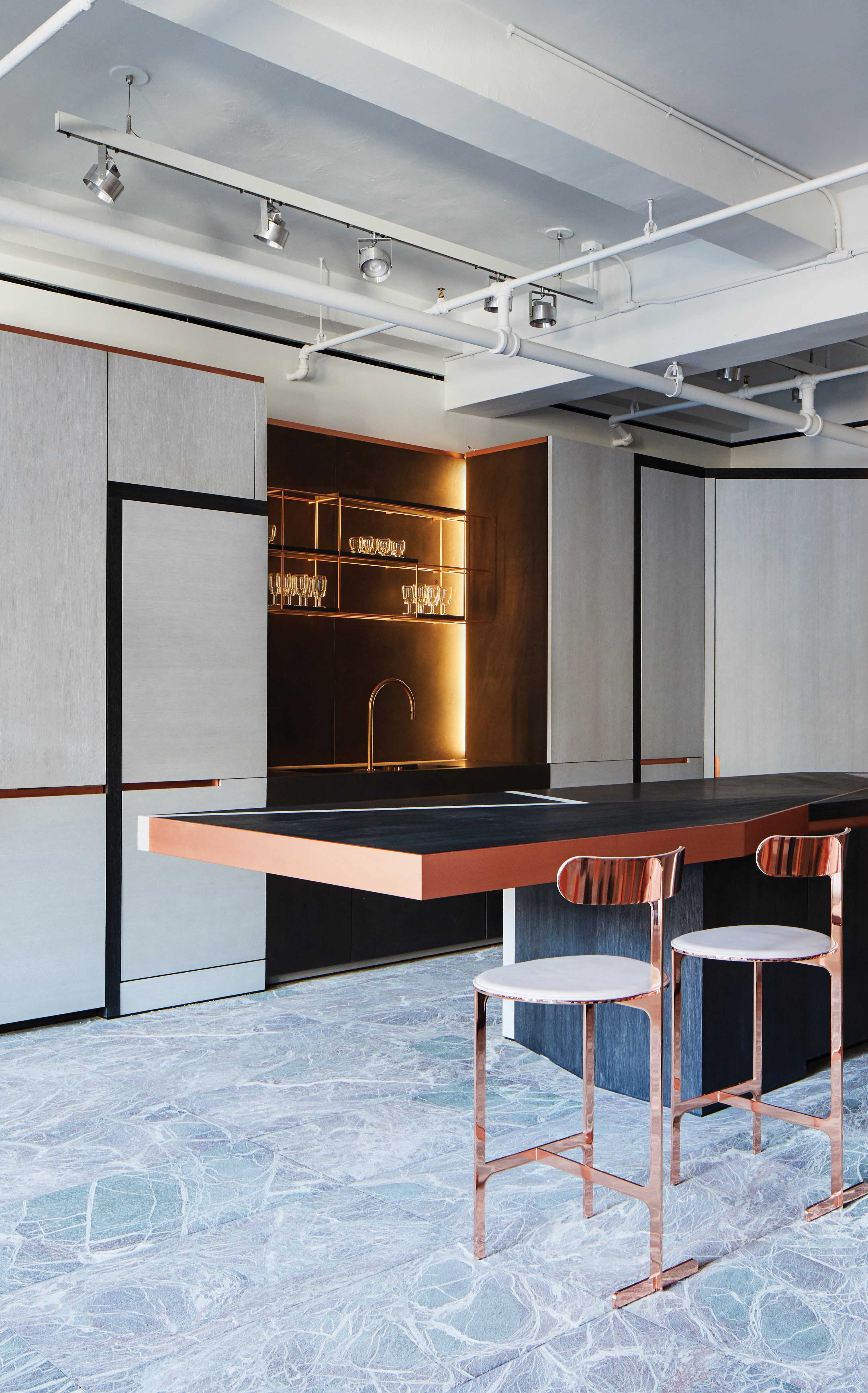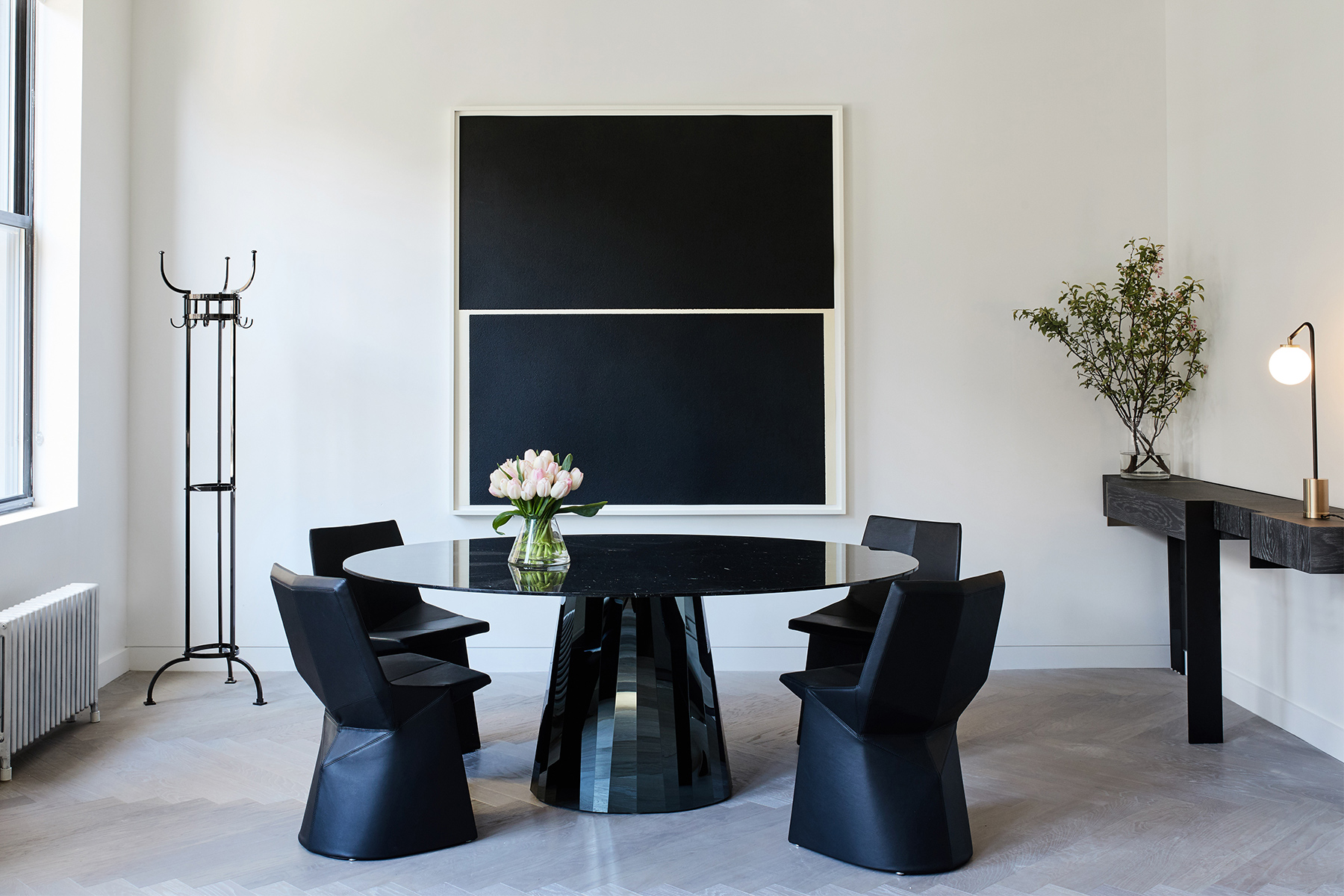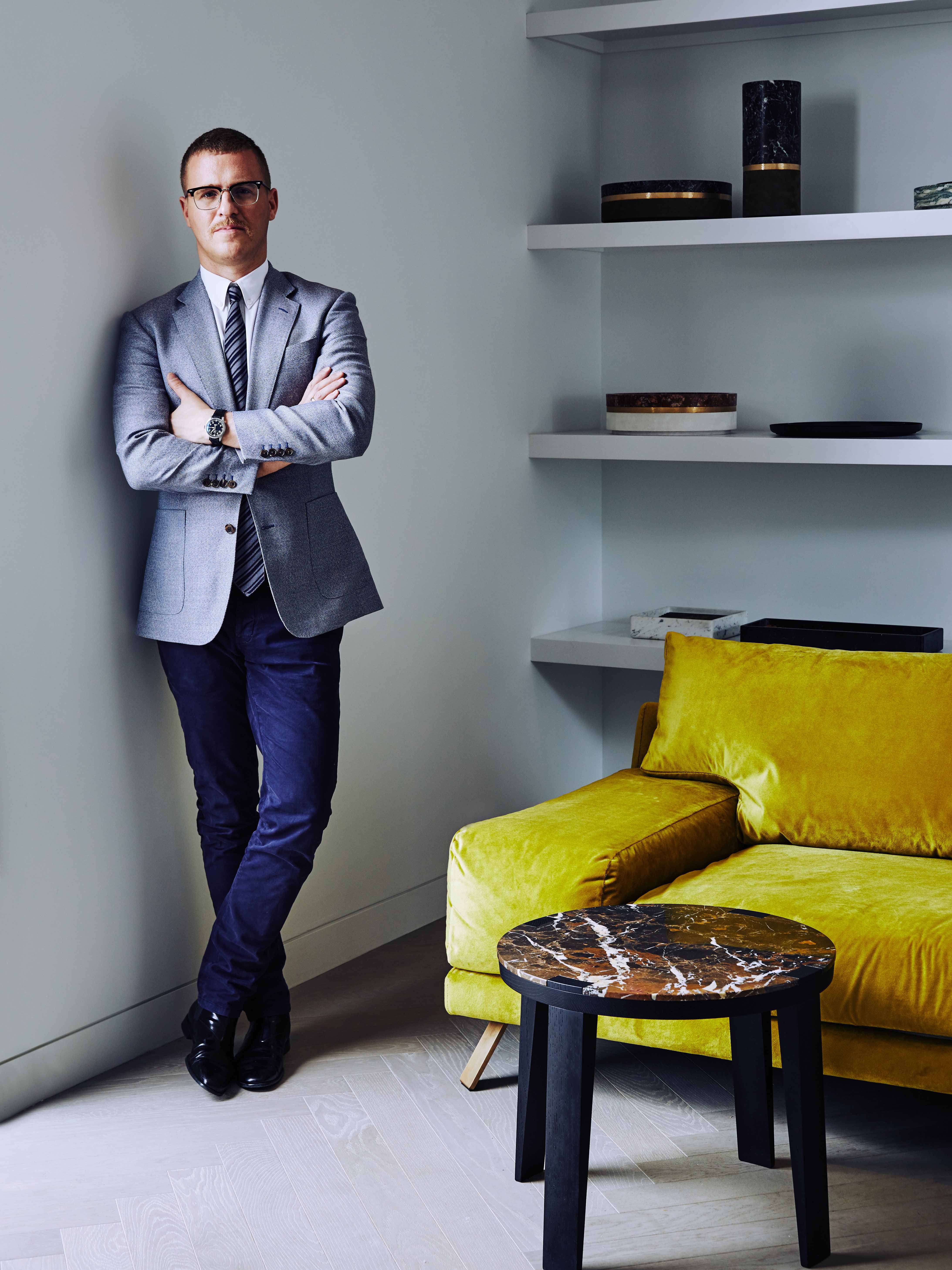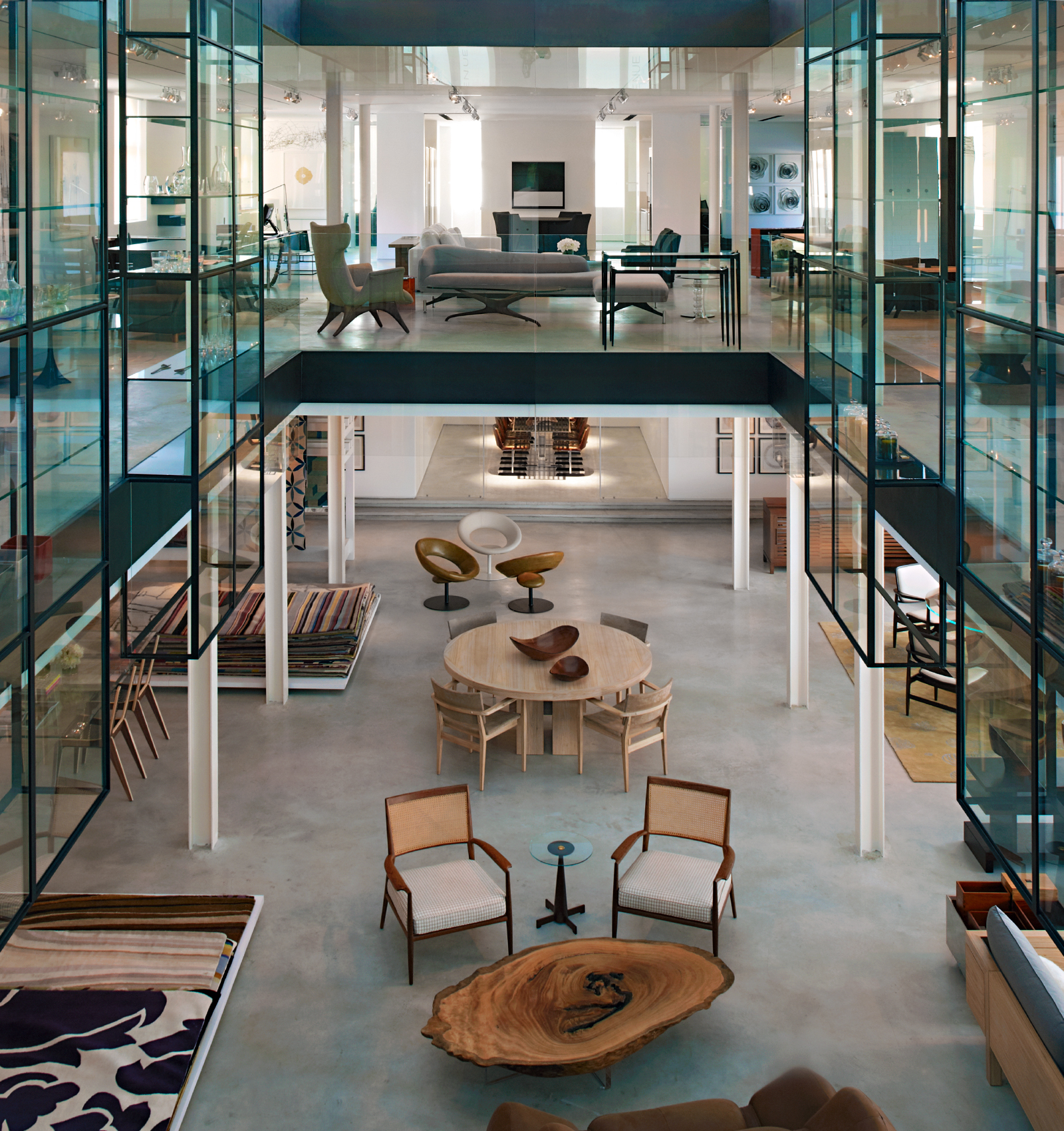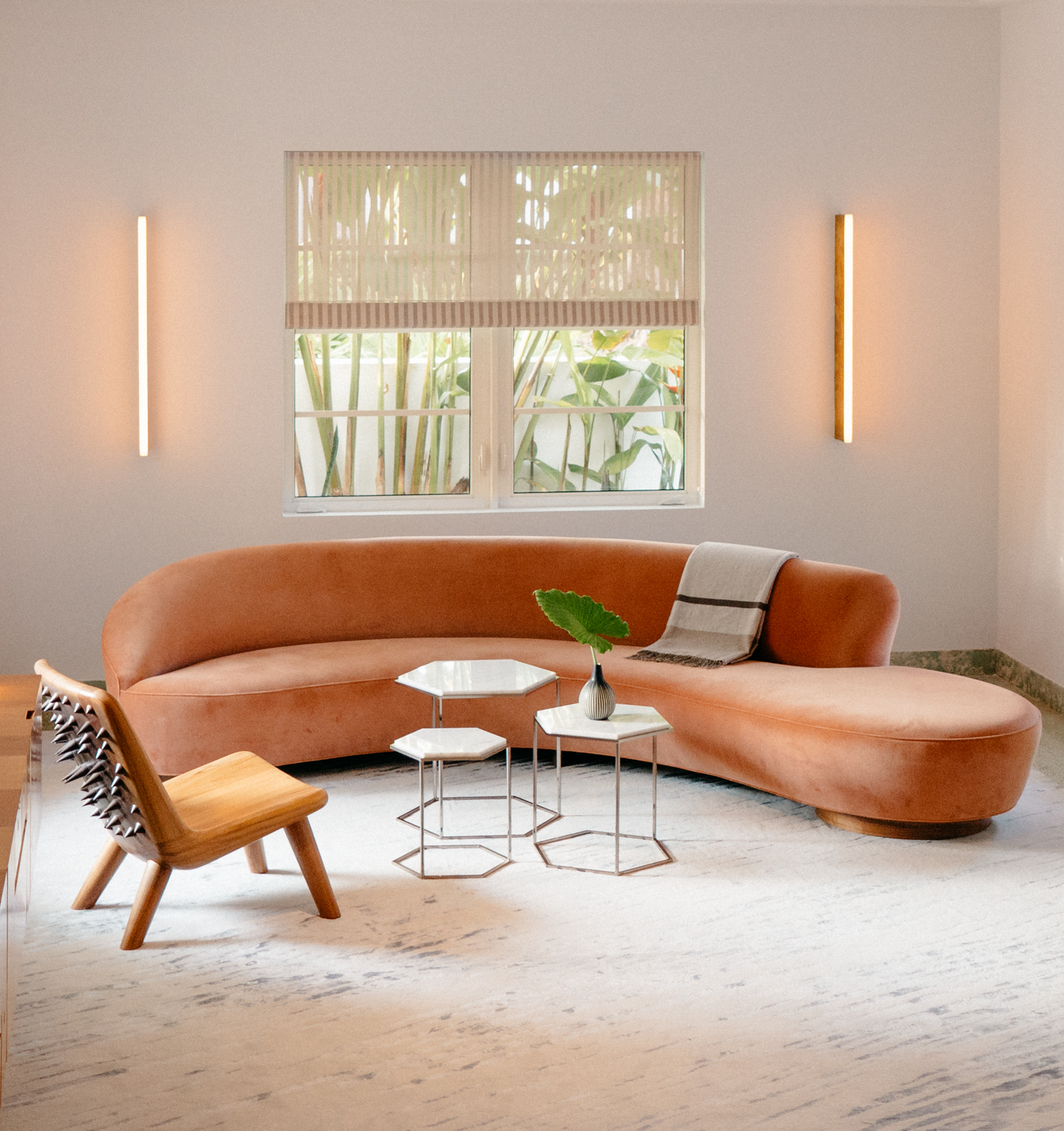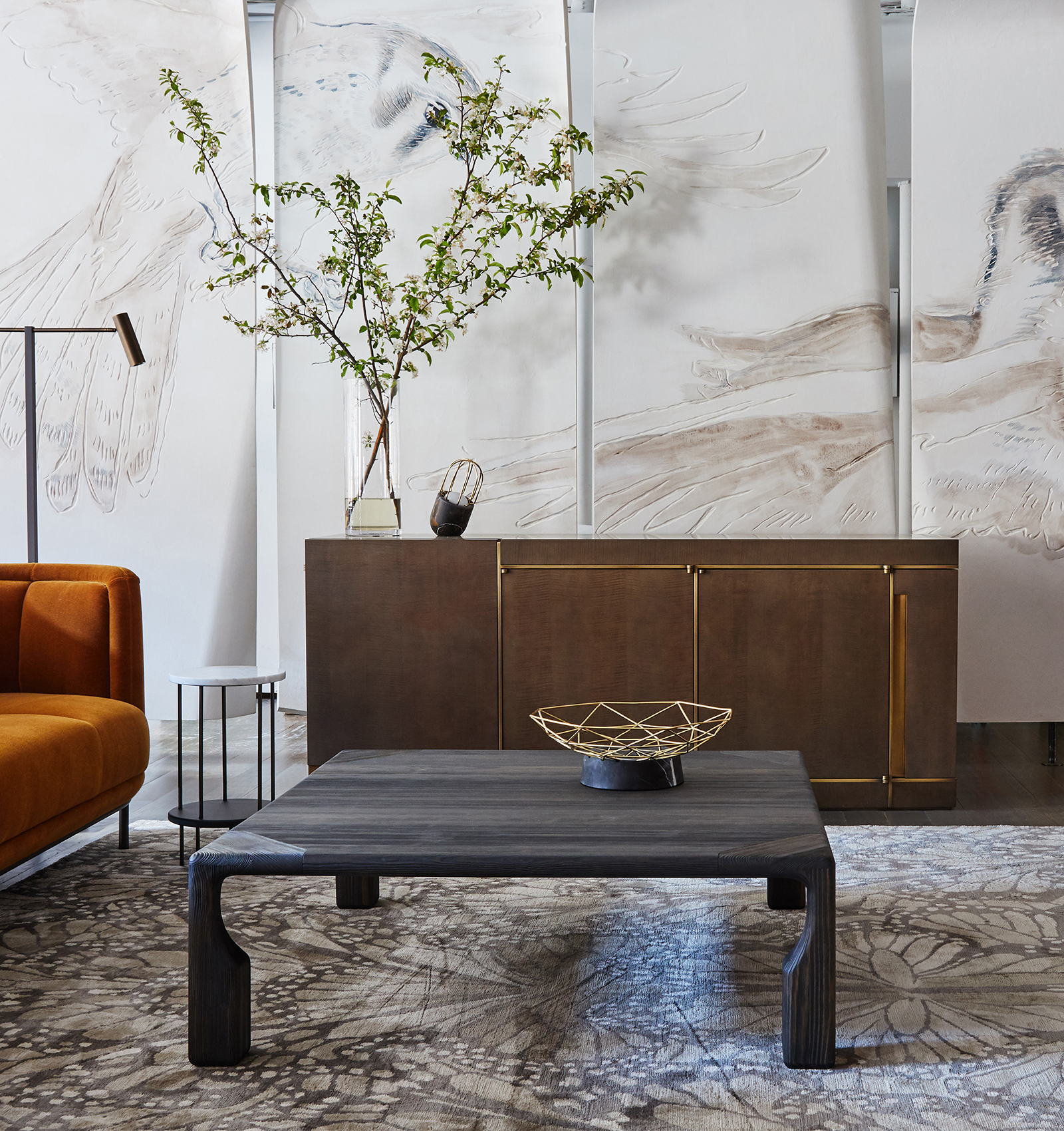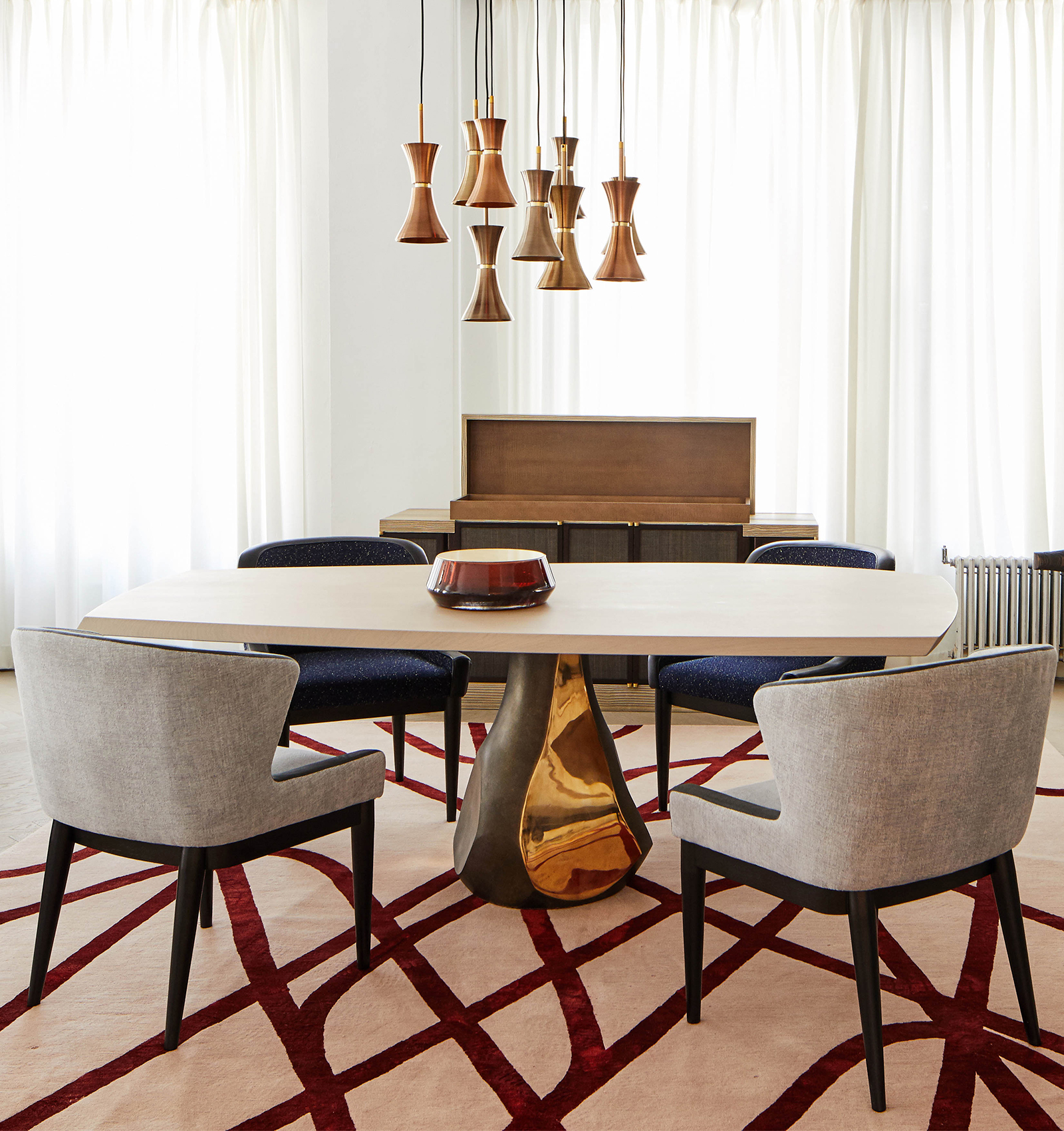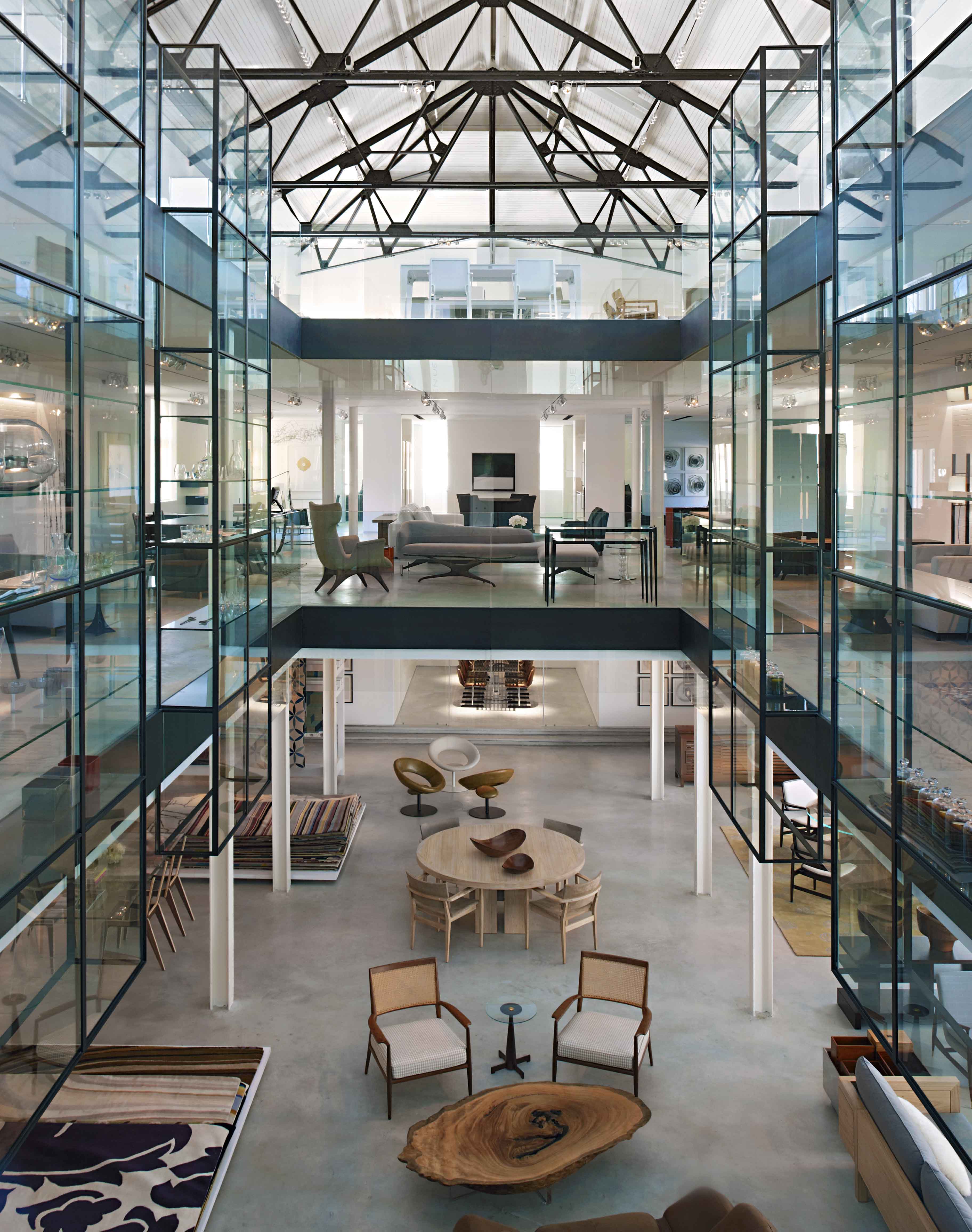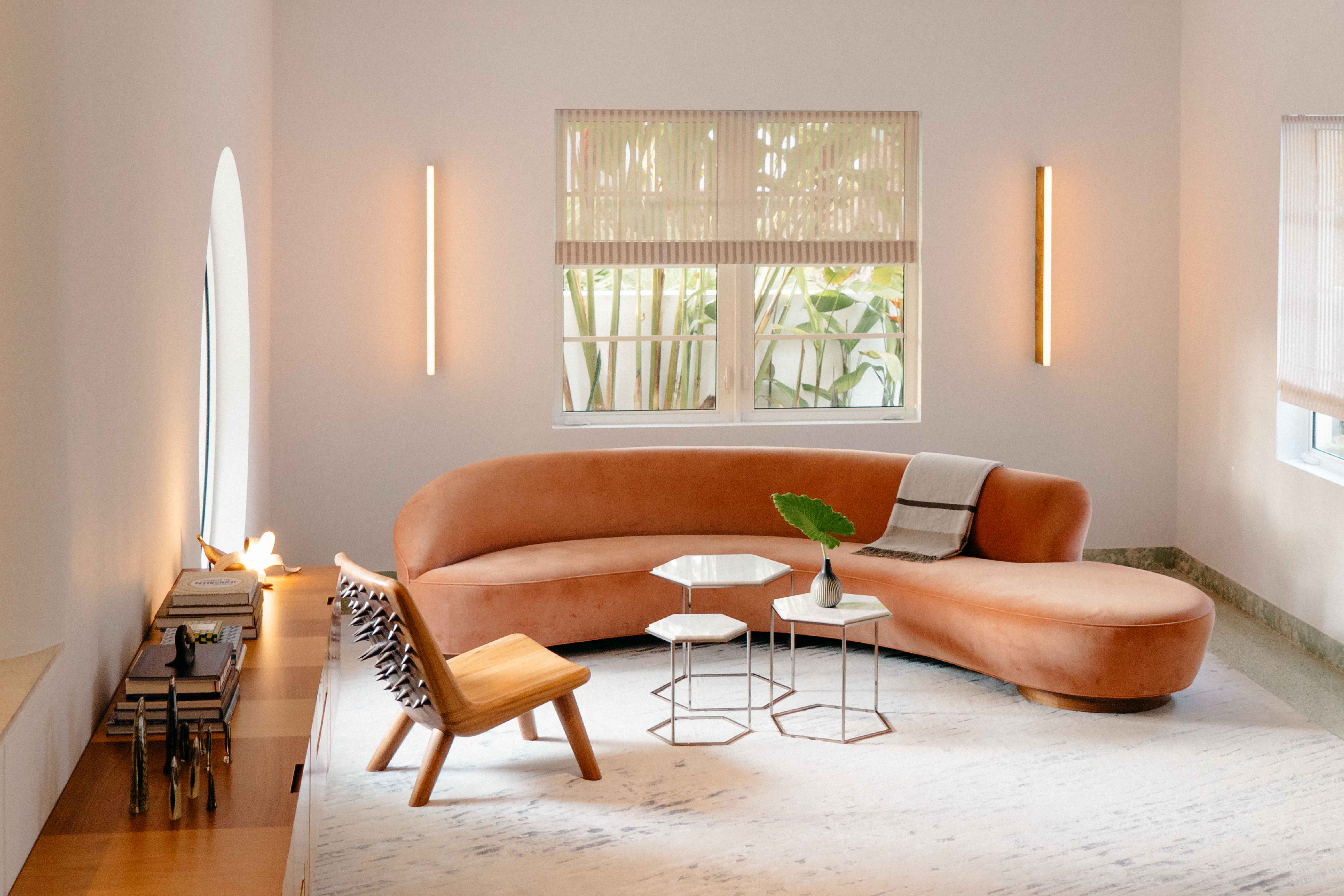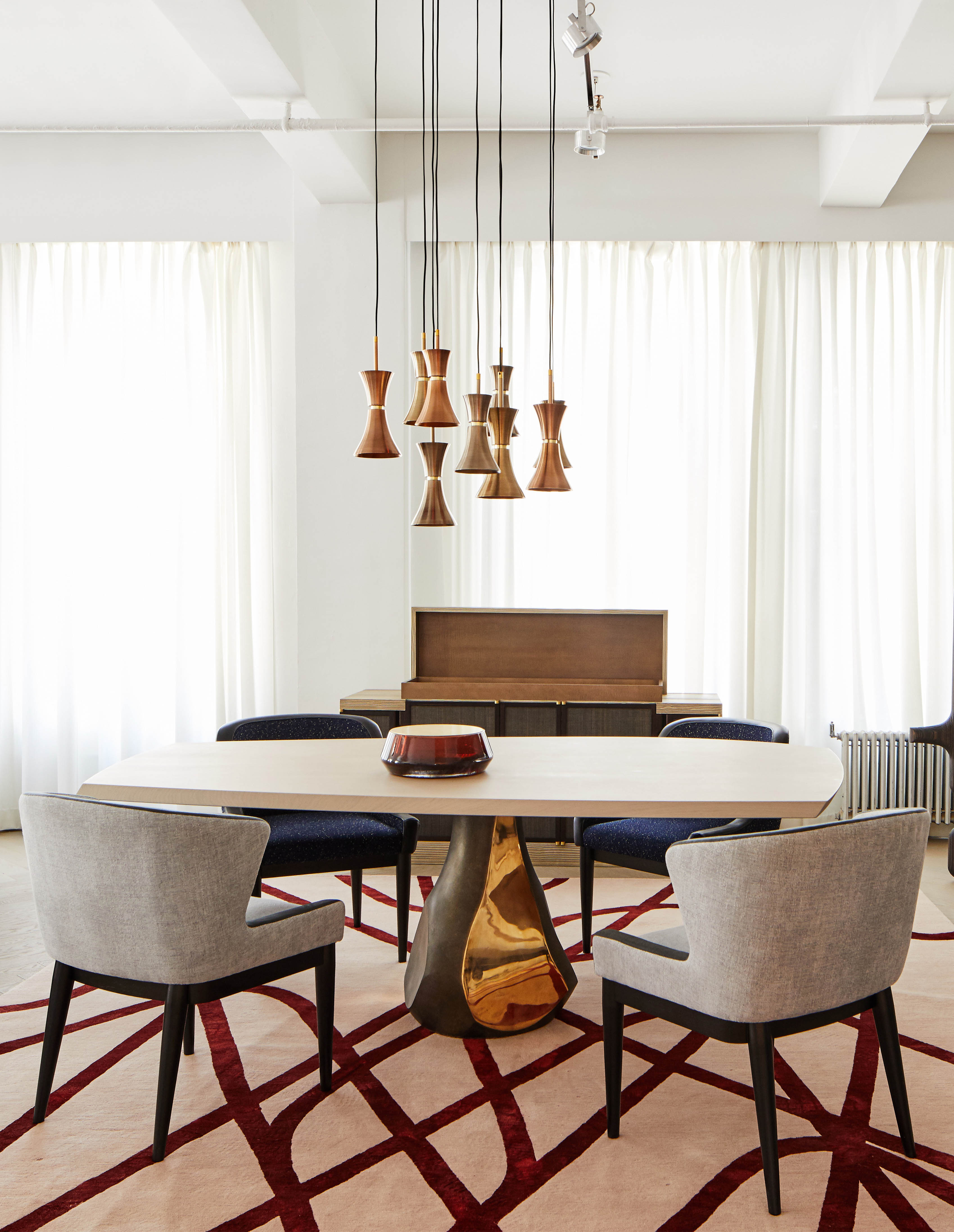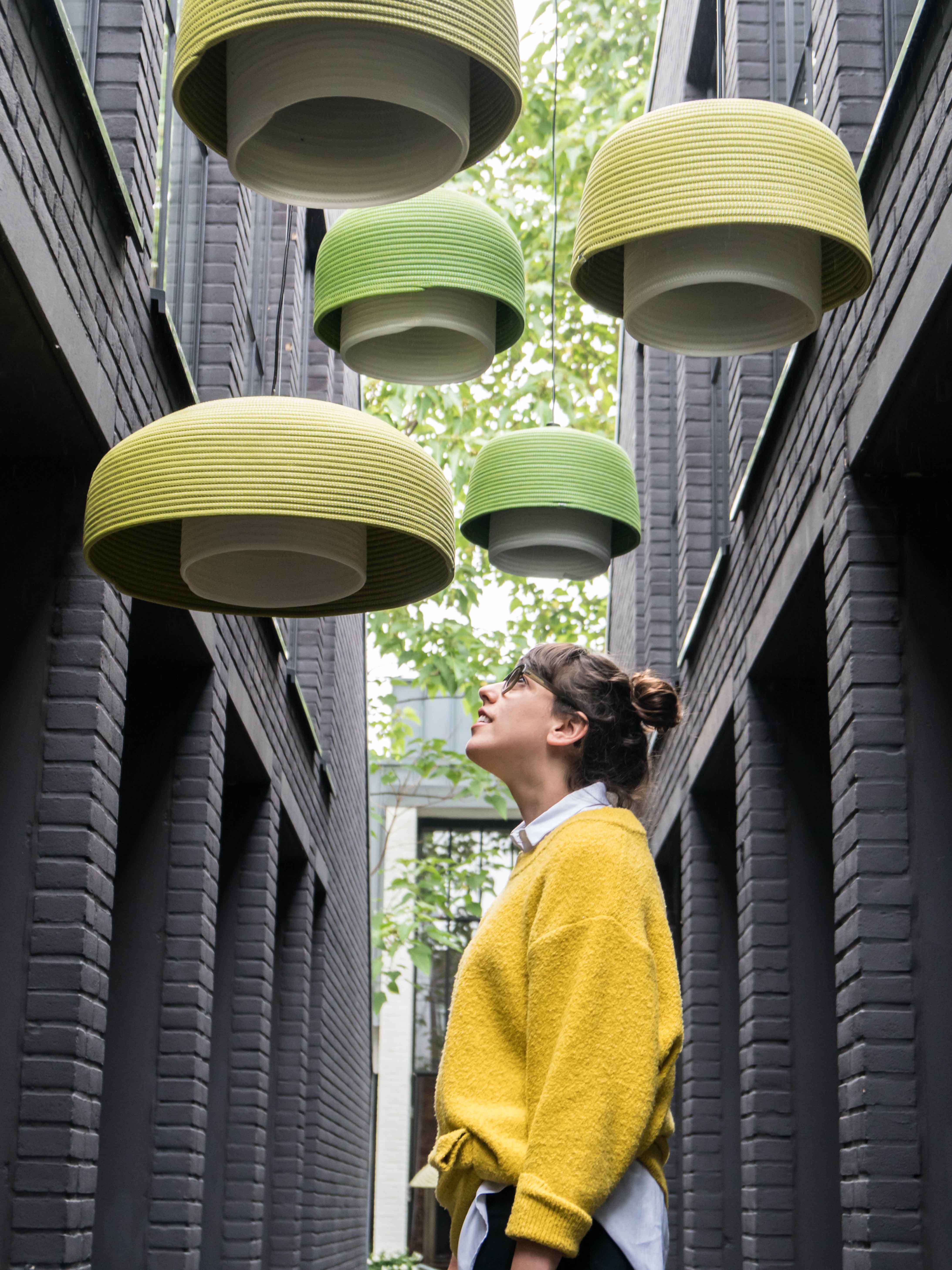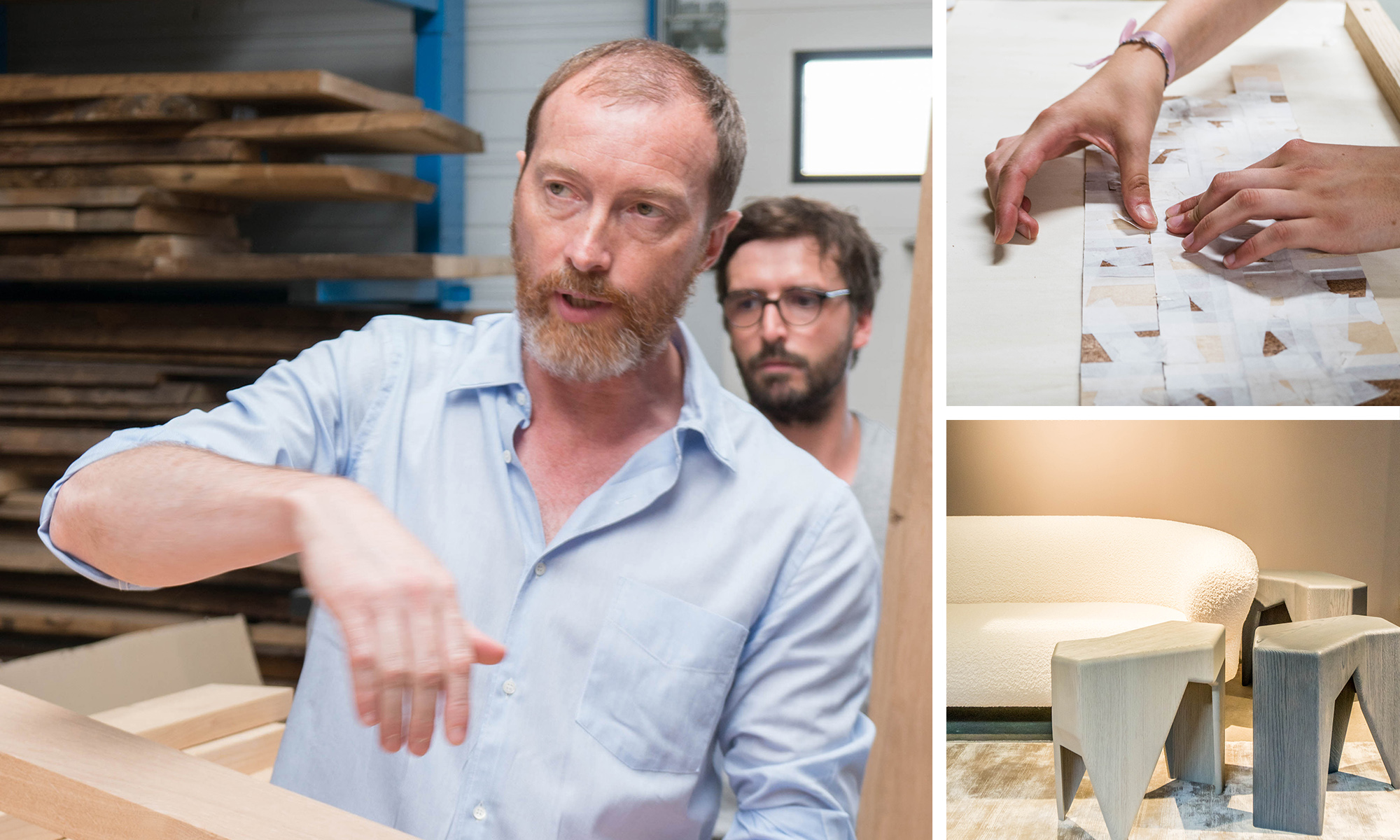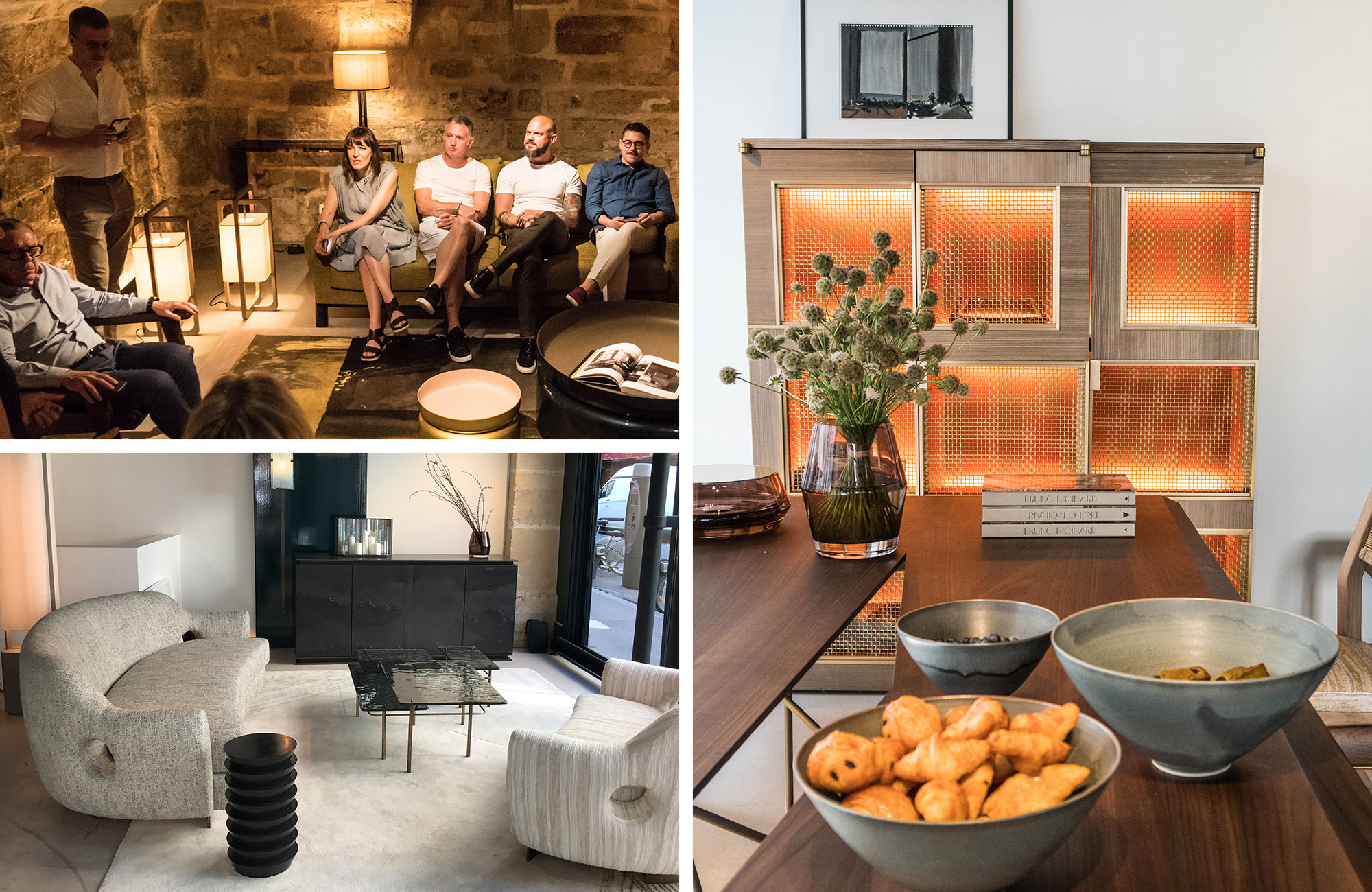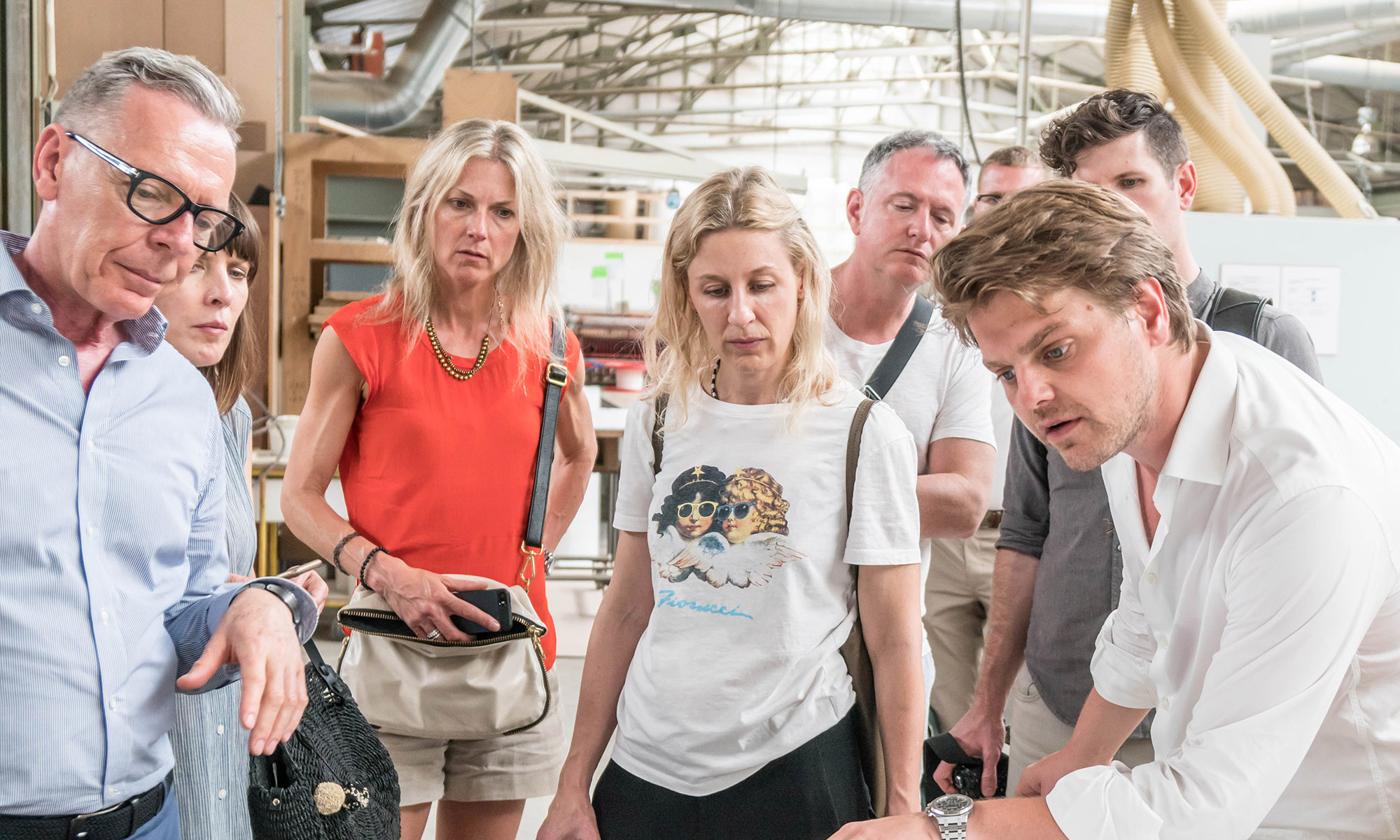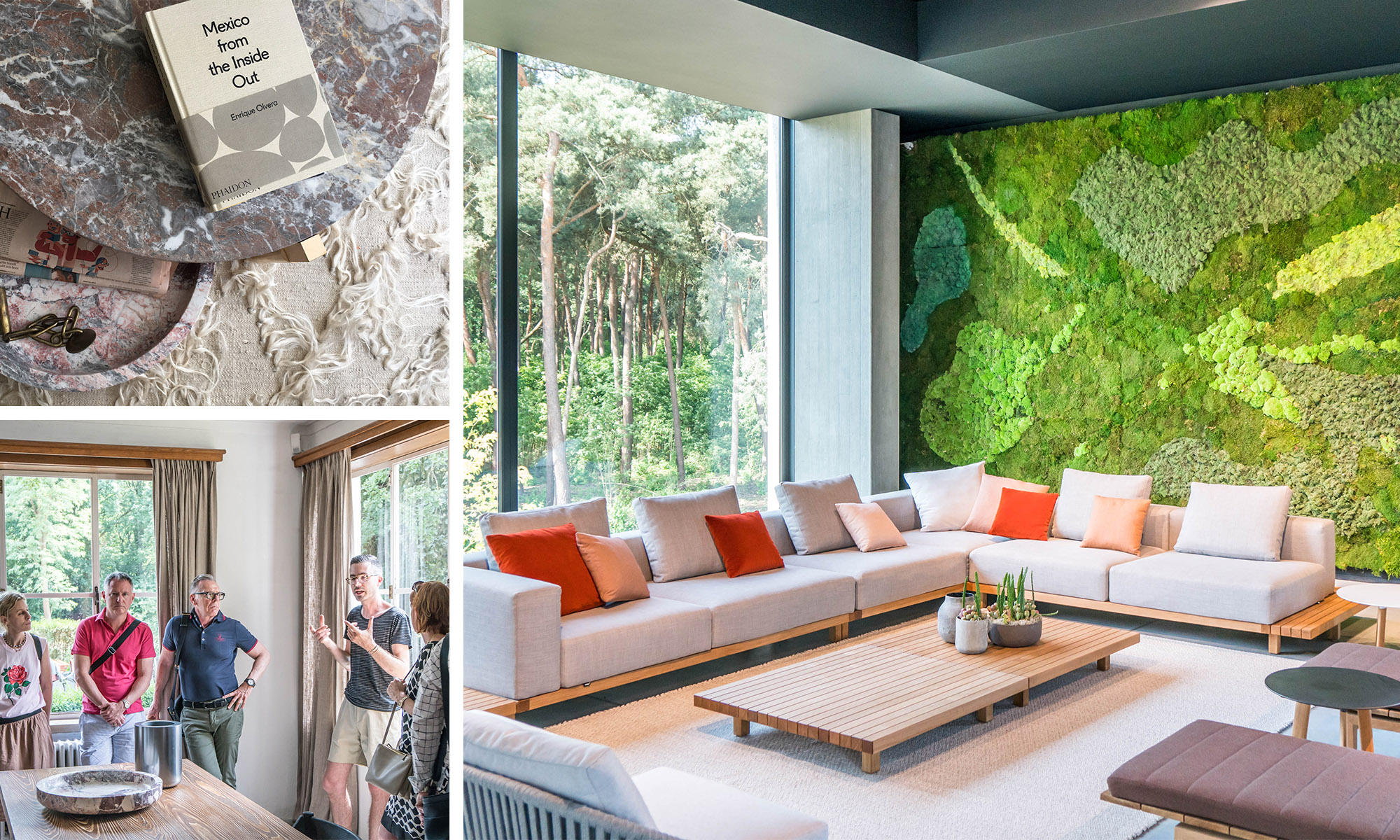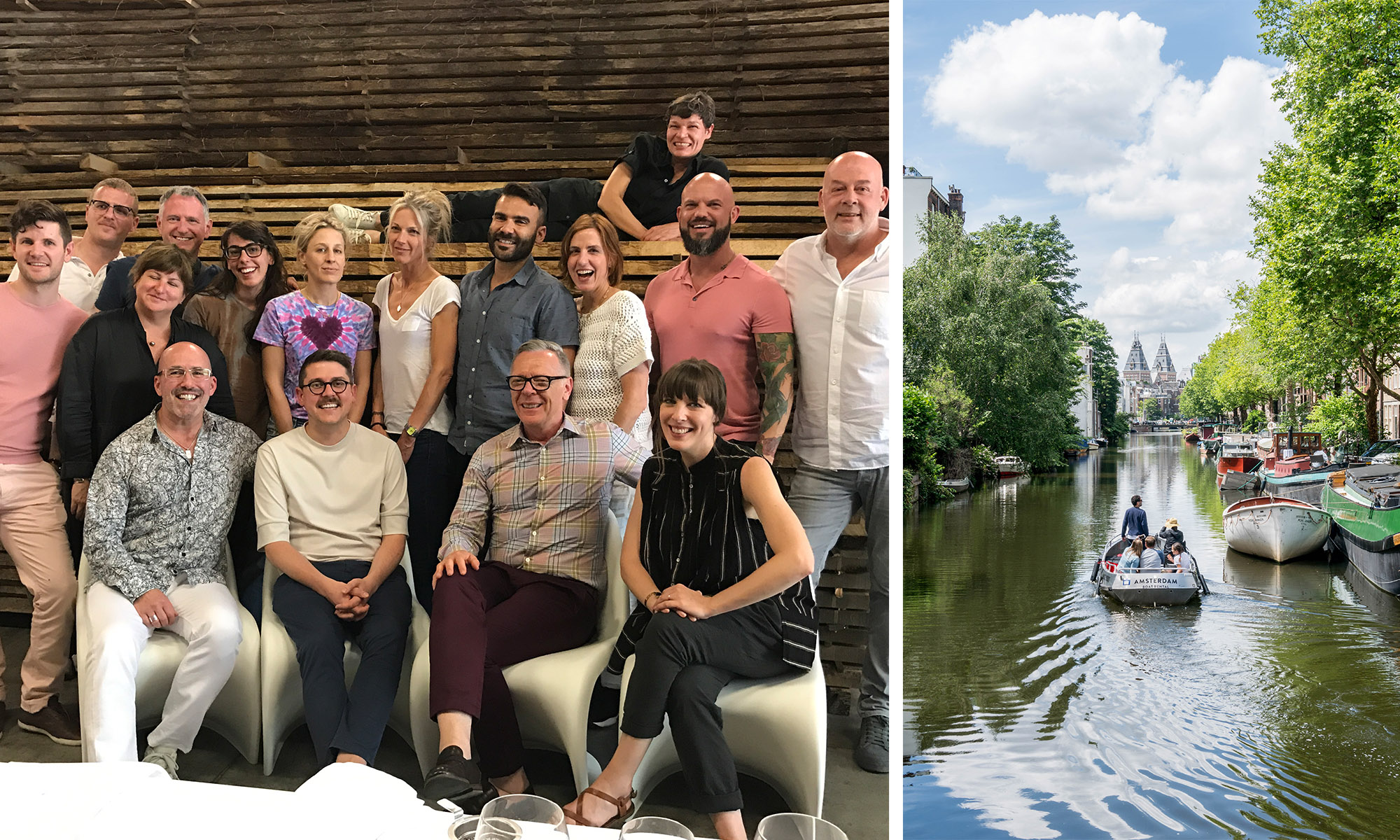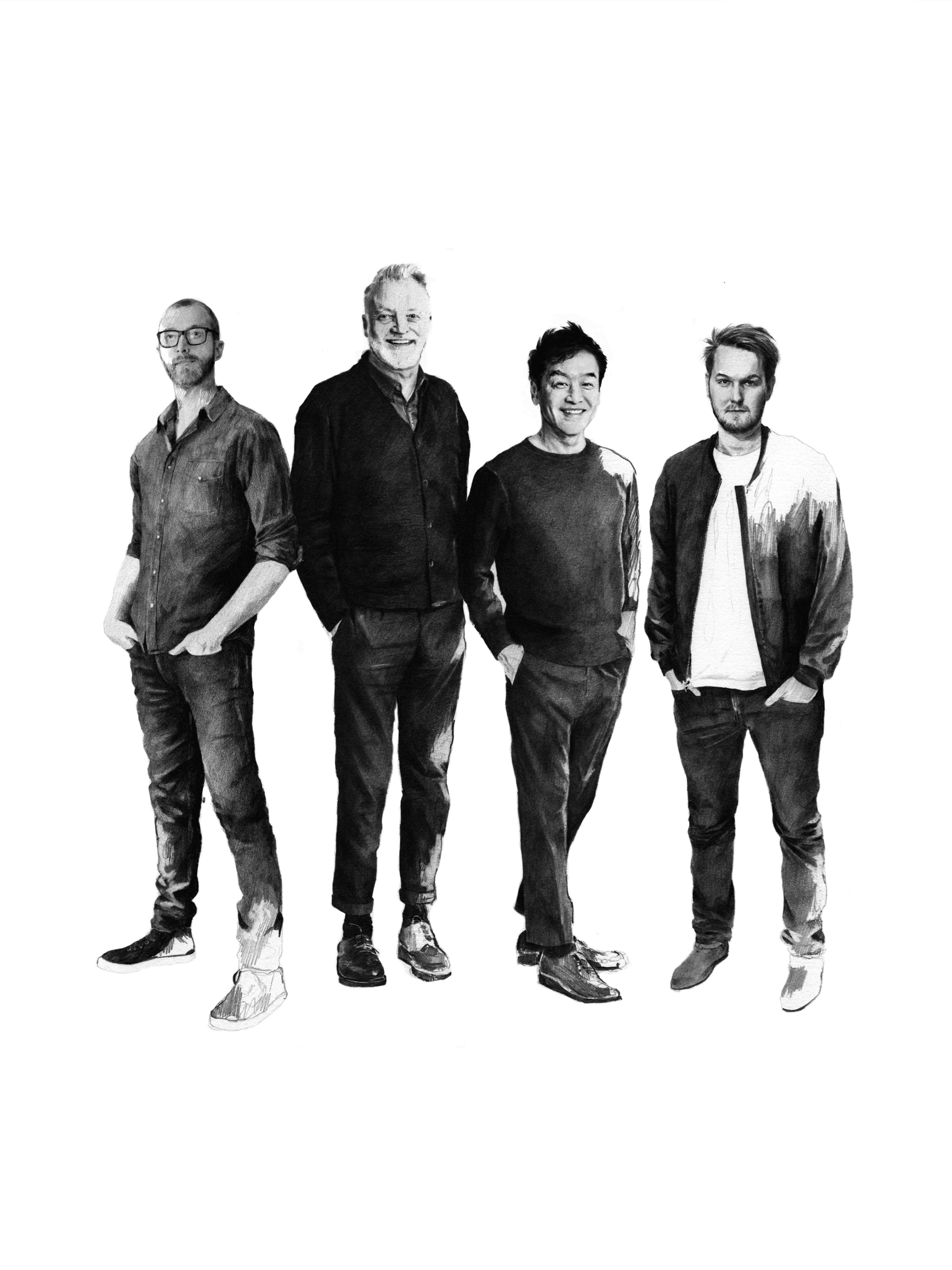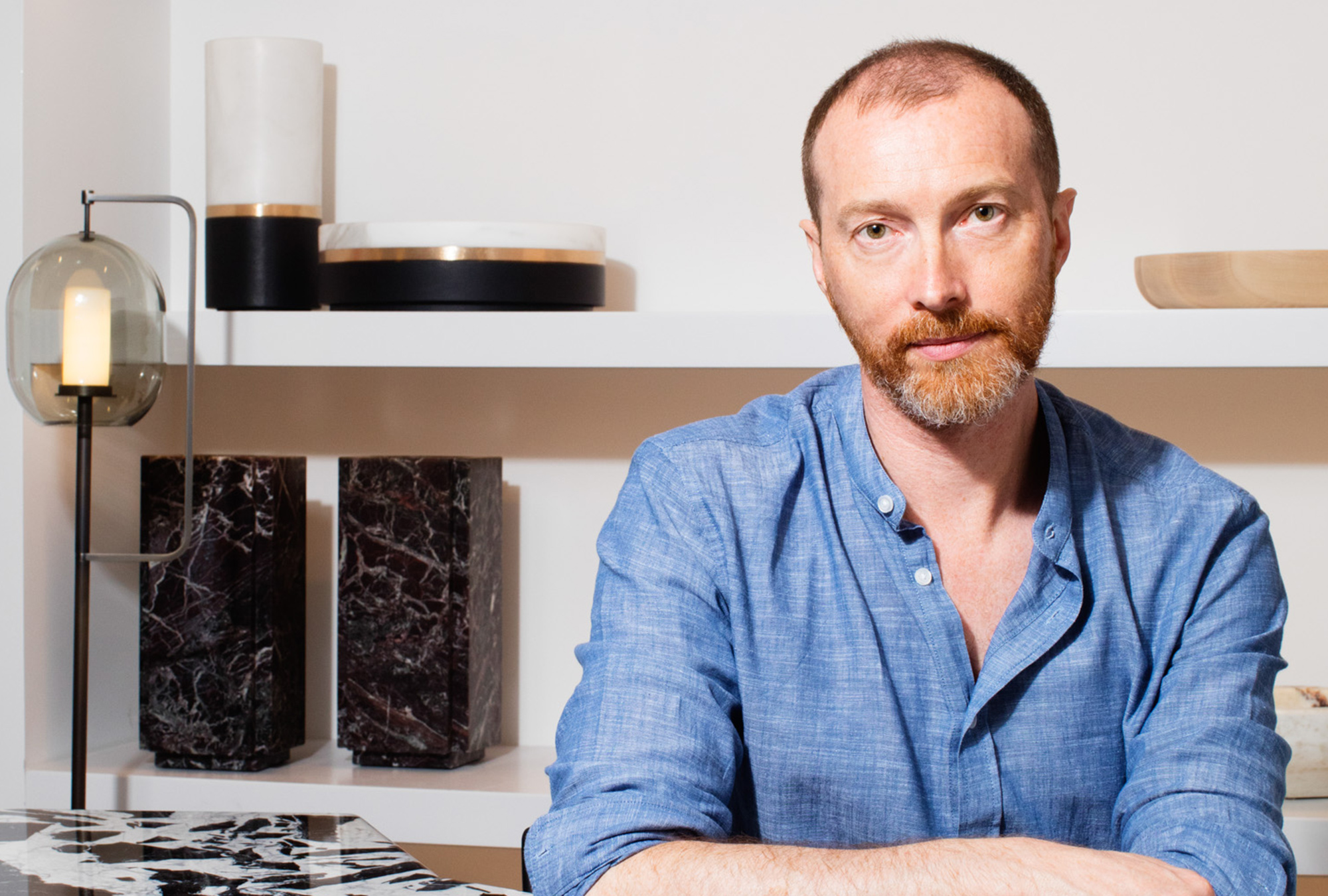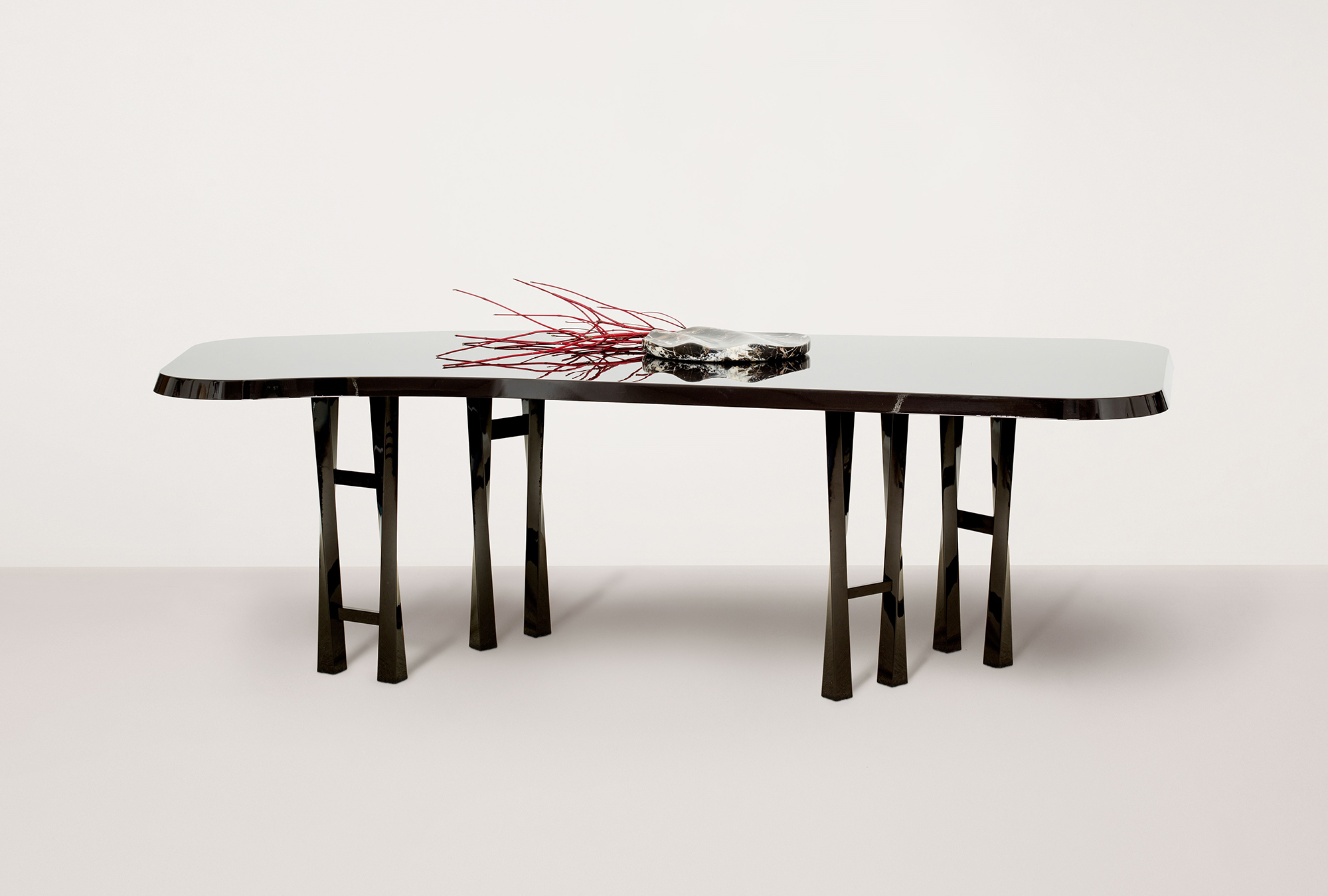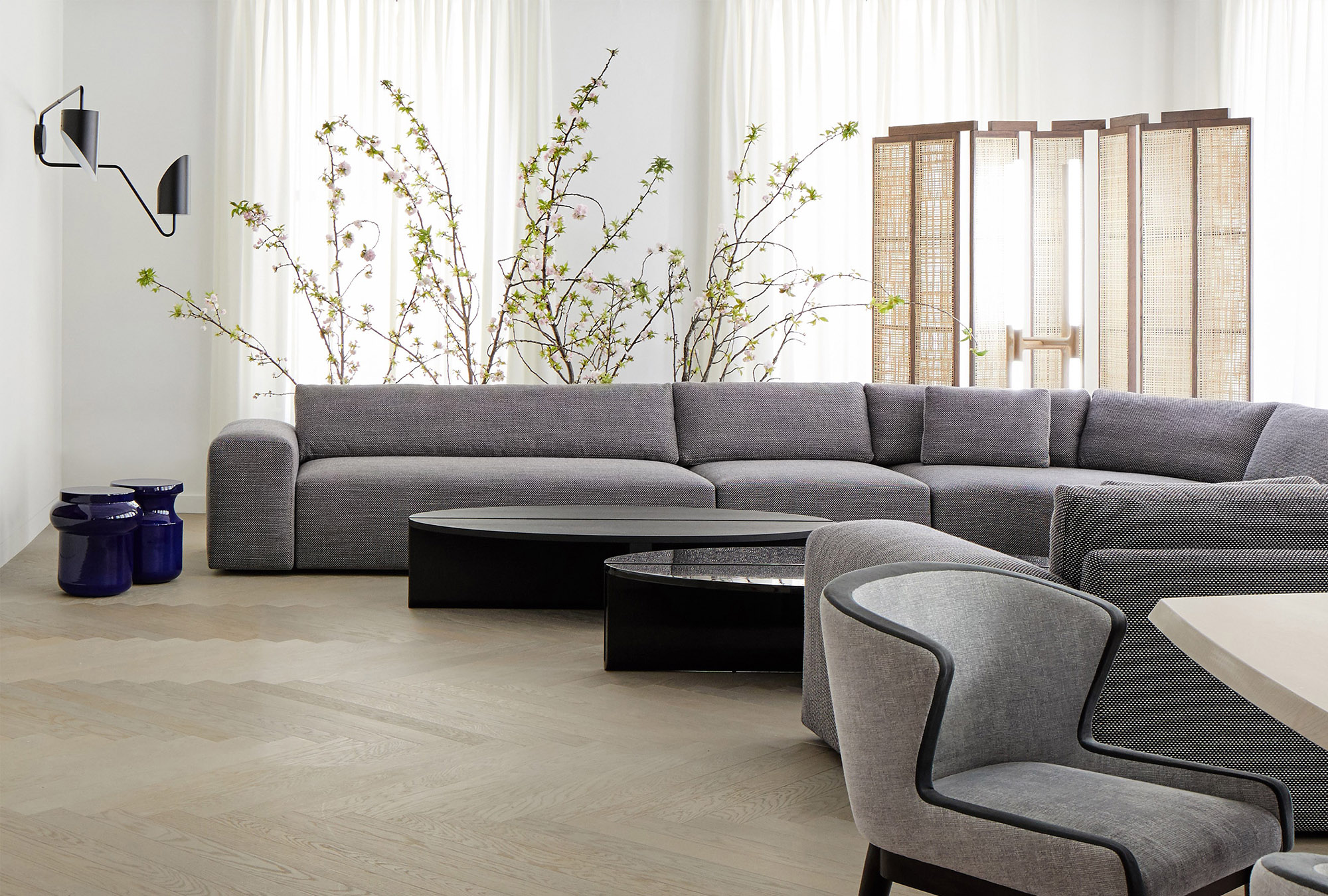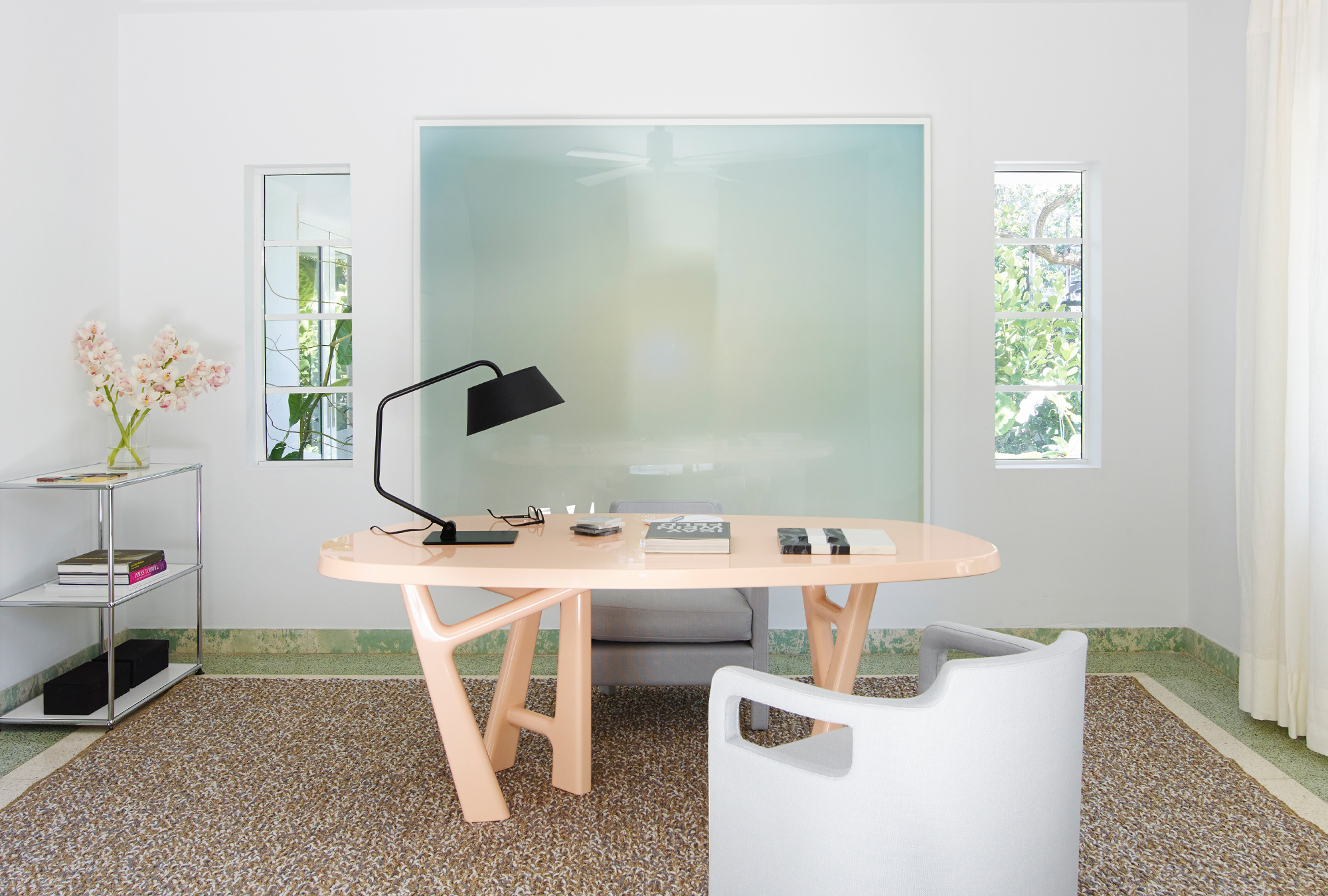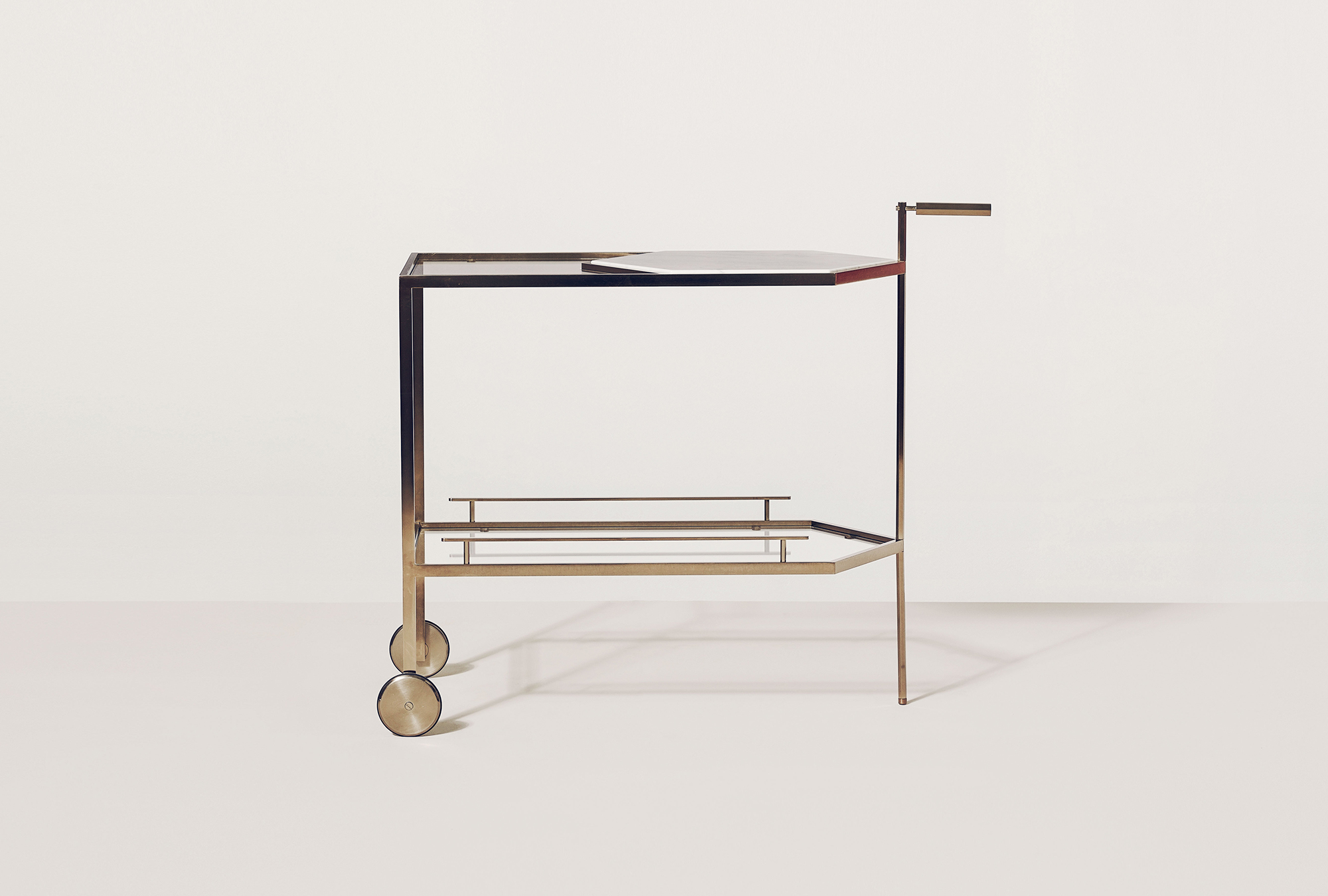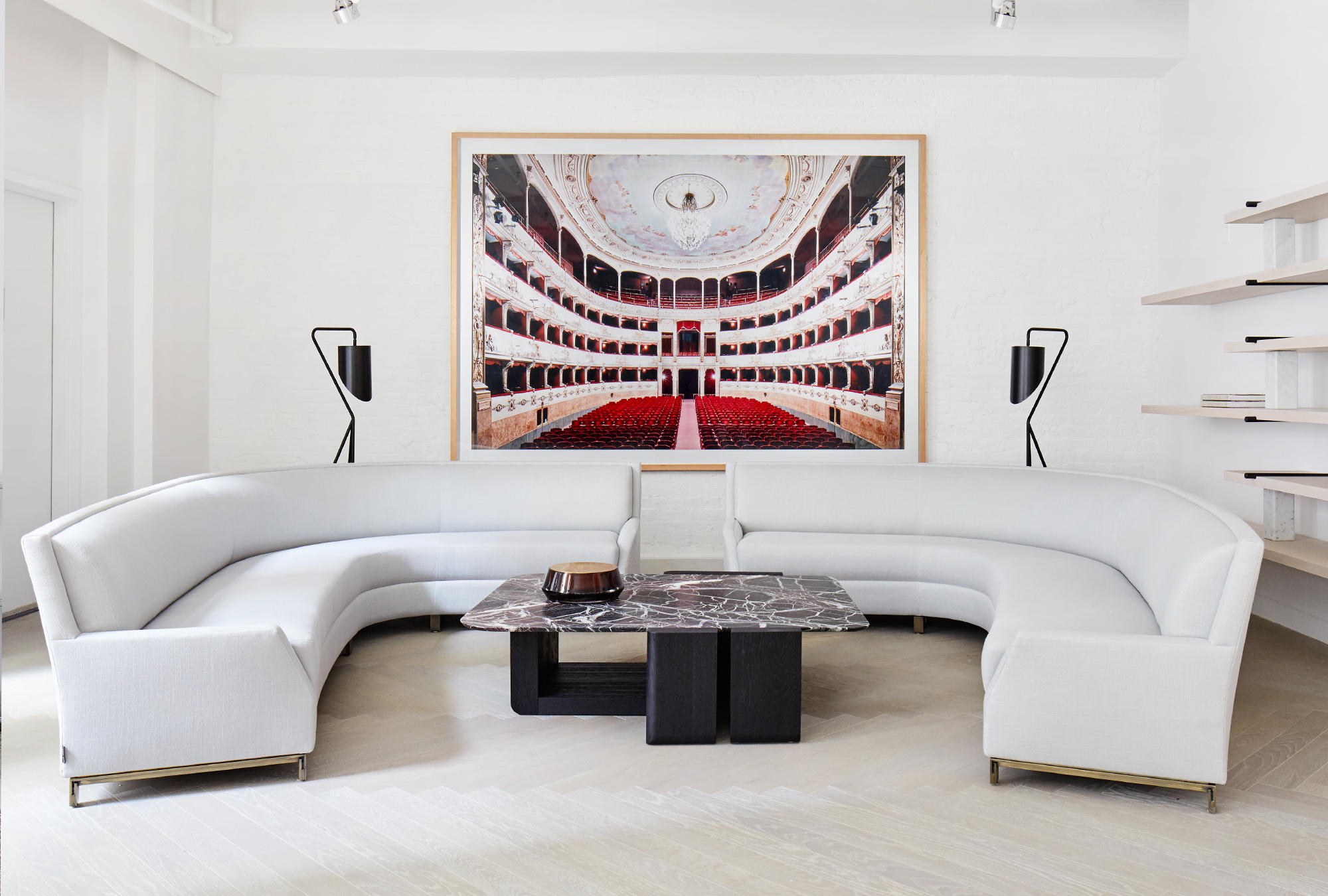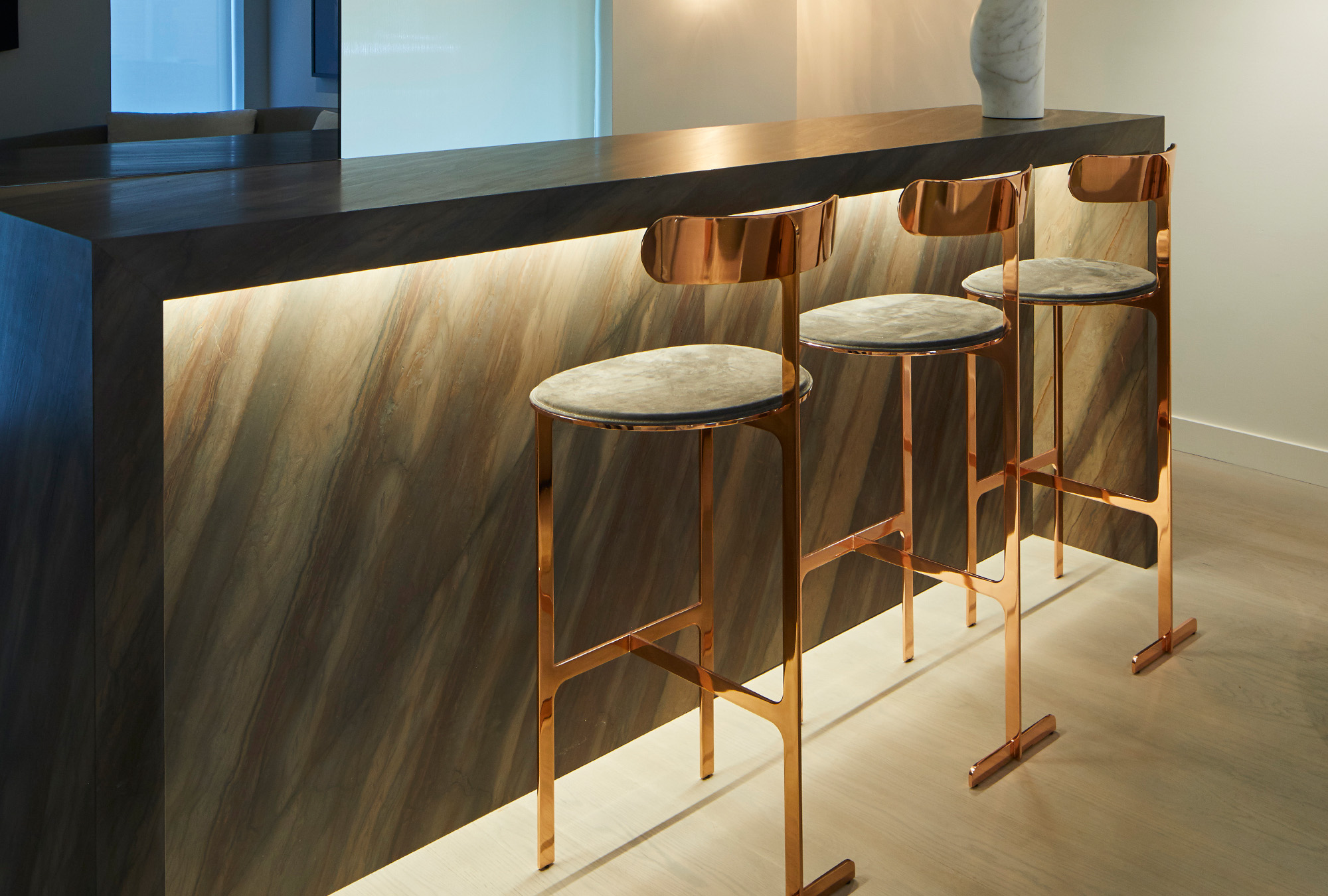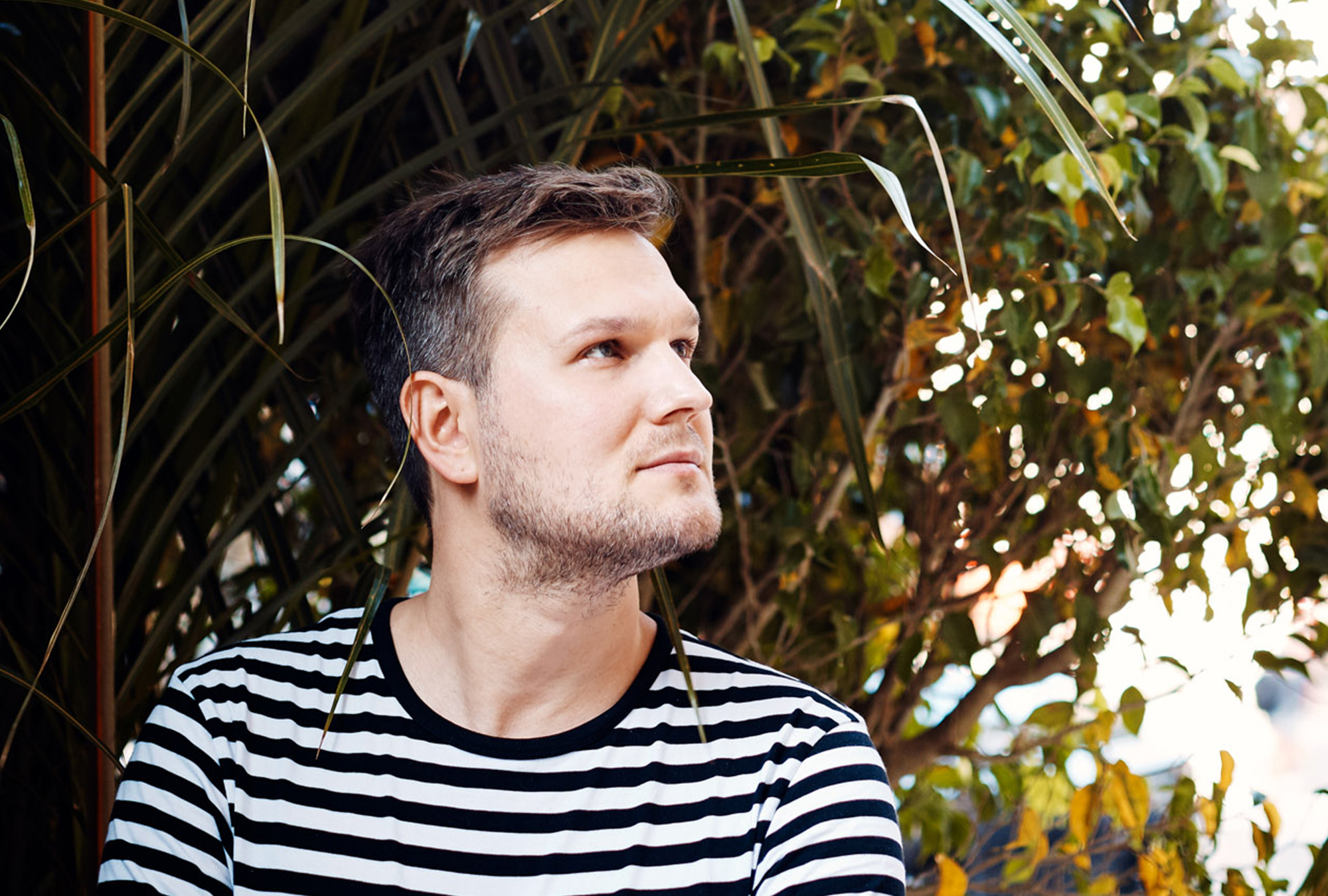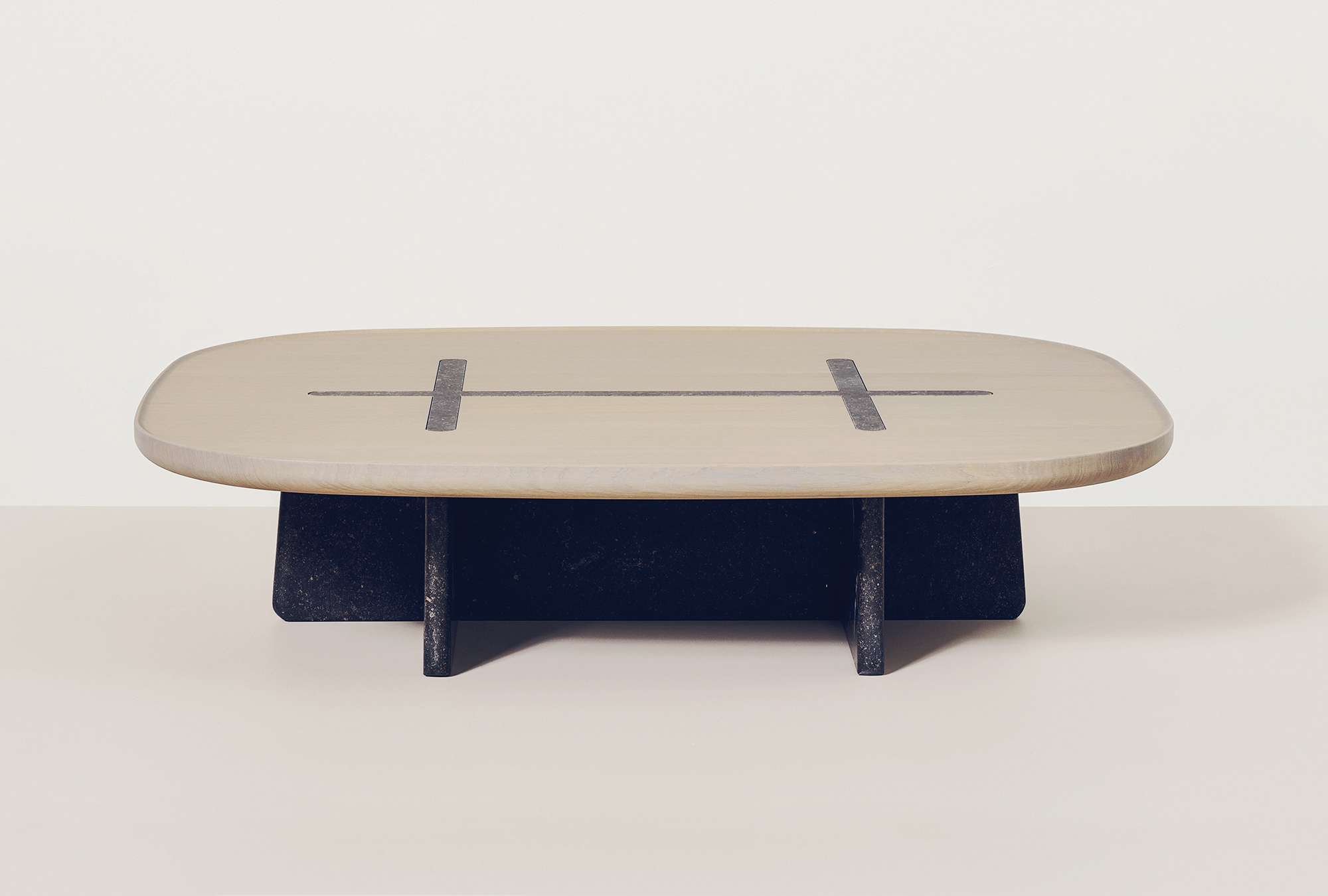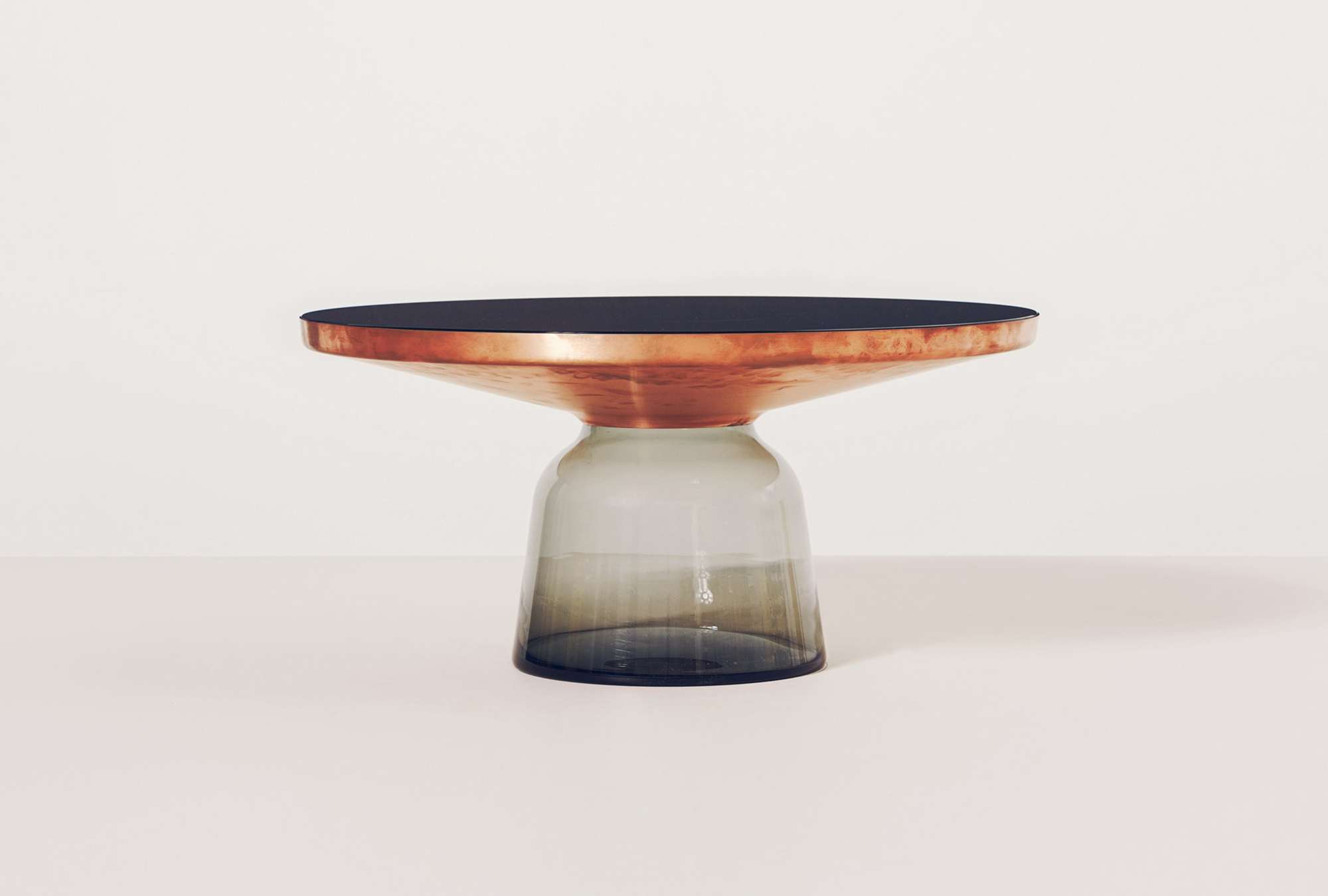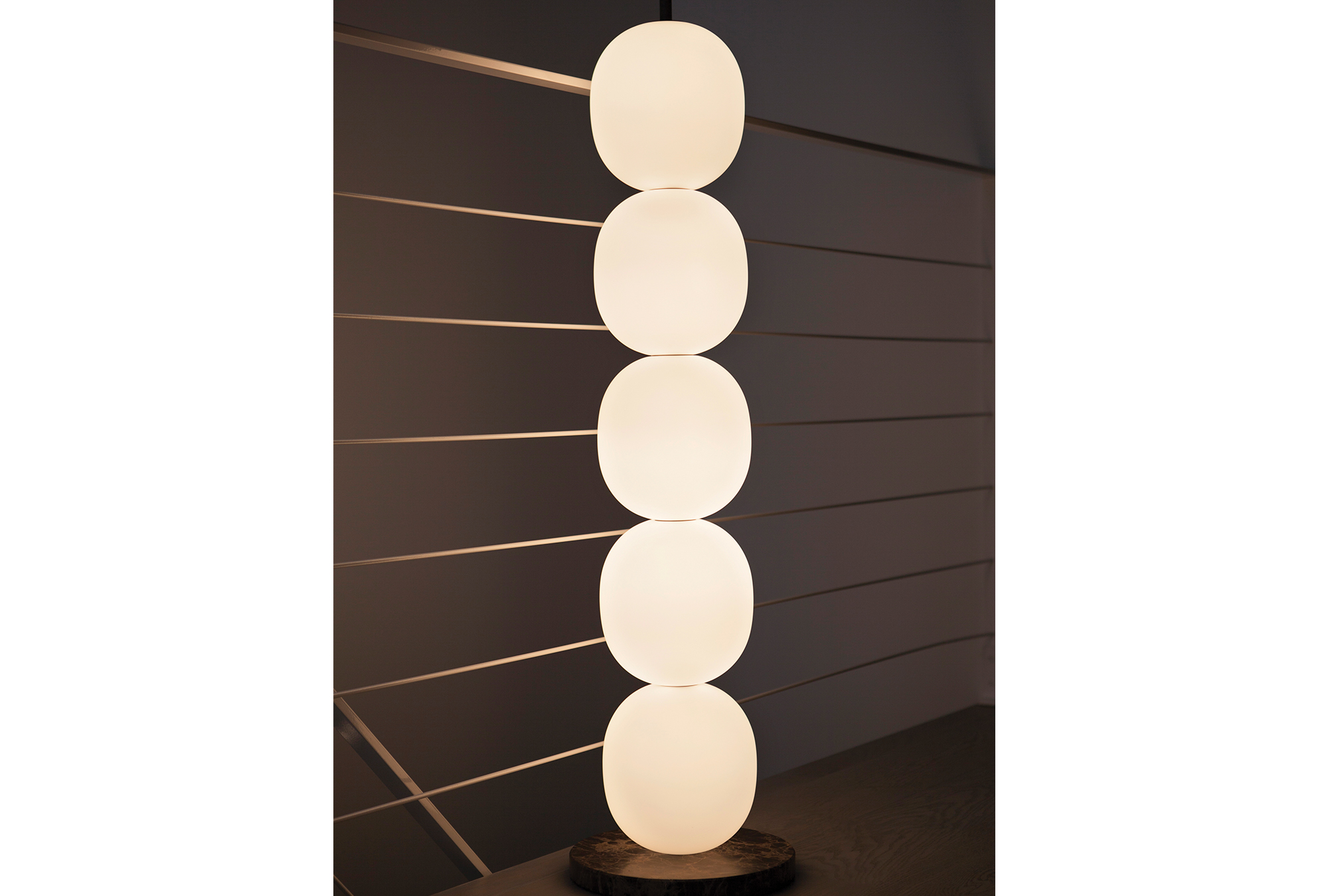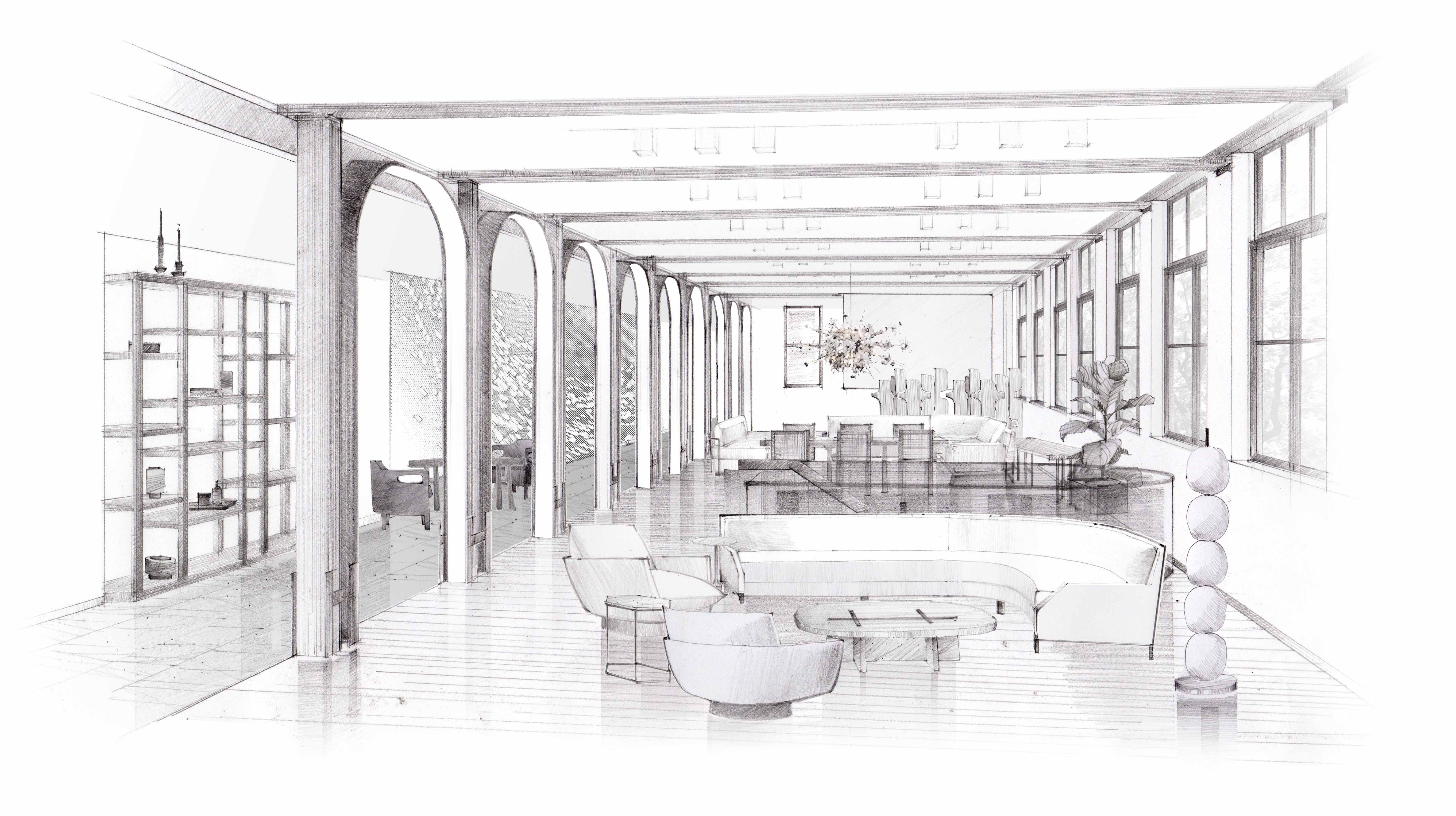Christophe Delcourt is a discreet Parisian with immense talent for personal, purpose-driven design, formed gradually and diligently over the course of his lifetime. Back in 1995, when he opened his first furniture shop in the Marais, Paris, he had created the catalyst that would launch his career, and ultimately propel him to this moment: a sit-down interview on his own custom-designed couch, inside Avenue Road’s glamorous New York City showroom.
By the 2000s, Delcourt had outgrown the Marais, moving his eponymous design company to an expansive, light-filled atelier on the top floor of a former piano factory in the Seventh Arrondissement, where client tête-a-têtes gradually lead to the creation of sumptuously outfitted interiors. Of course, his approach sounds better in Delcourt’s language: “Les pièces sont dessiner pour justement pouvoir être adapter à la demande de chacun.” Translation: His product line is more haute couture than prêt-à-porter. You don’t go to Delcourt to buy off-the-rack. Everything is tailor-made to fit the client’s personality and lifestyle.
“I deteste uniformity. Don’t tell me you’re a New Yorker and that’s it. I want specifics. I need to understand my clients. I need to know what universe they live in, as well as how they live,” the self-taught designer says.
He is the picture of a craftsman—a faithful carpenter who has spent his life working with his hands. Someone so steeped in raw materials, you can almost hear him sanding and polishing the wood, brass, marble, and leather that surrounds him. But if you start him on the subject of French manufacturing, Delcourt becomes vehemently patriotic. For him, traditional French craftsmanship is not only the foundation of his trade, it’s integral to his sense of identity and purpose.
“In France, we have a strong manufacturing tradition. And manual workers are culturally very important. We call ourselves le patrimoine—members of a heritage that is passed down from generation to generation. Today we realize this craft is precious and we must fight to conserve it,” says Delcourt. What’s more, his clients have come to expect it. You’ll never find a mass-produced industrial object chez Delcourt. What you will find instead is an artful collection of furniture and lighting that subtly blends perfectionism with tangible sensuality.
For example, the look and feel of Delcourt’s Avenue Road collection of furniture pieces is smooth, solid, and sturdy. Consisting of wood dining tables, hand-stitched sofas, and brushed-brass lamps, everything in the collection is constructed by French manufacturers, and built to last. “I want to make designs that are timeless. There is no plastic, nothing toxic, or fragile. This type of quality you can’t do en masse,” he says, adding, “I find it very pretentious to say, ‘I will make furniture for millions.’”
Whether or not he intends it, Delcourt is a champion of slow design. The more successful he becomes, the harder he clings to his roots. For him, French craftsmanship is sacred, and in Avenue Road he found a partner that would both respect and support that belief, by championing quality above profit. Delcourt has no desire to open new stores or speed up production. Instead, he takes his time, trusts the process, and allows the product to form in his hands.
